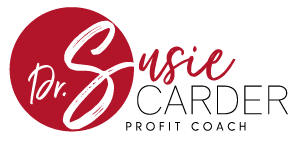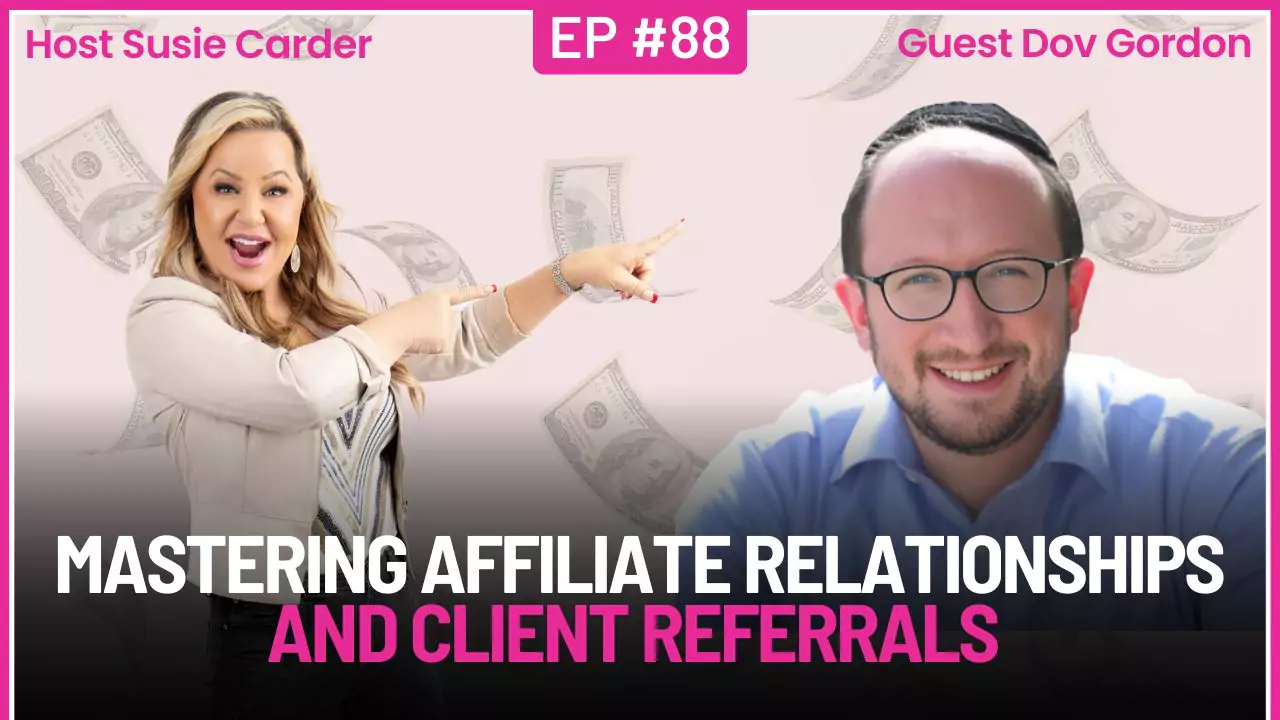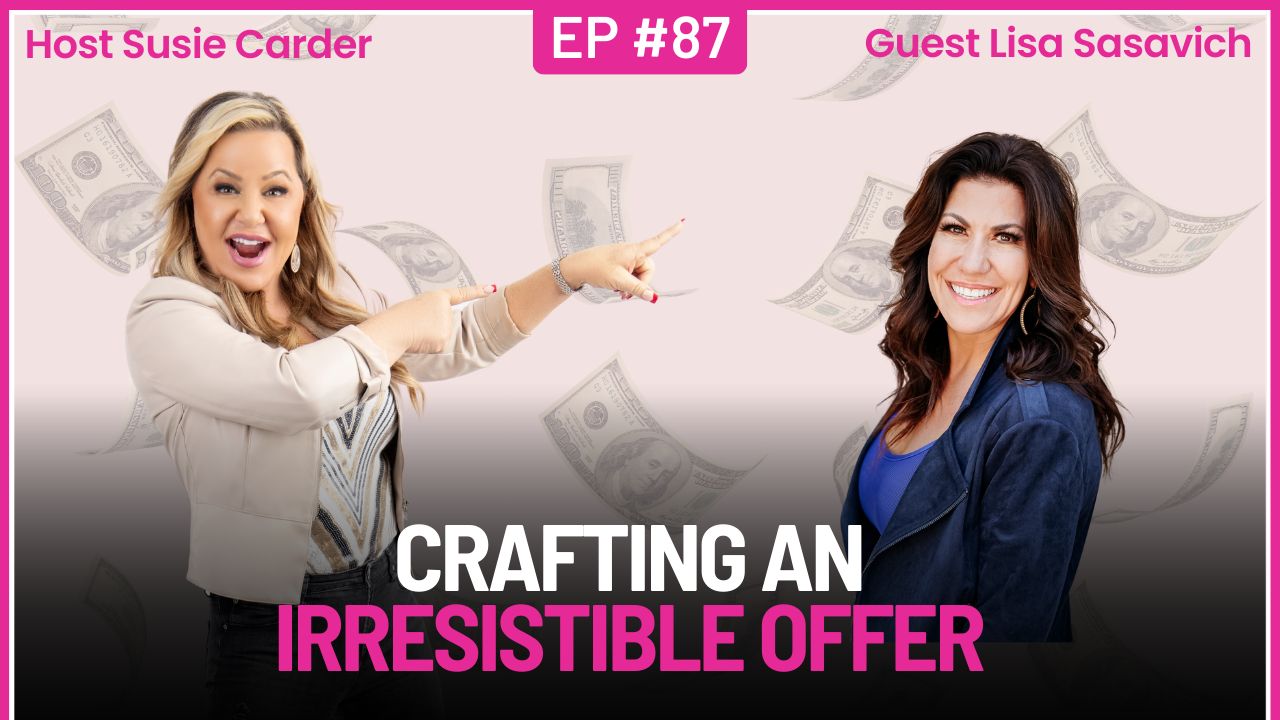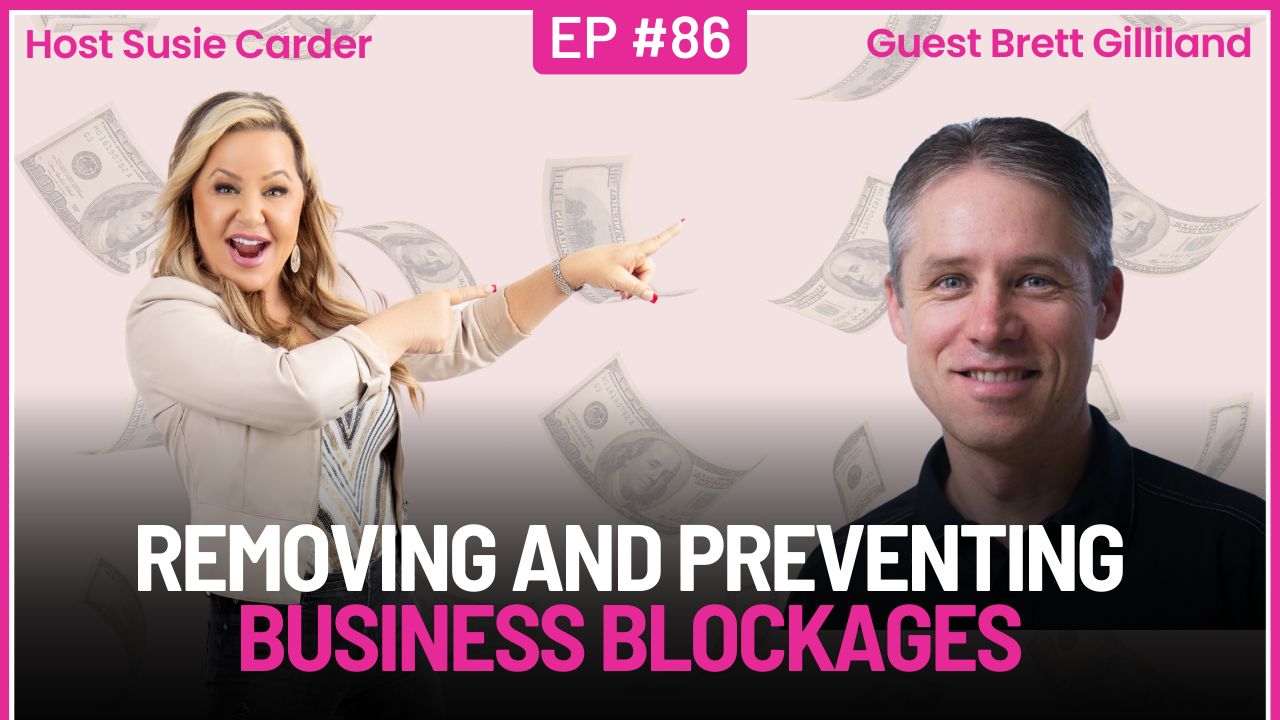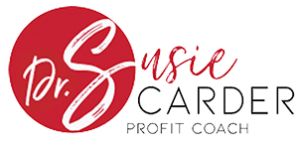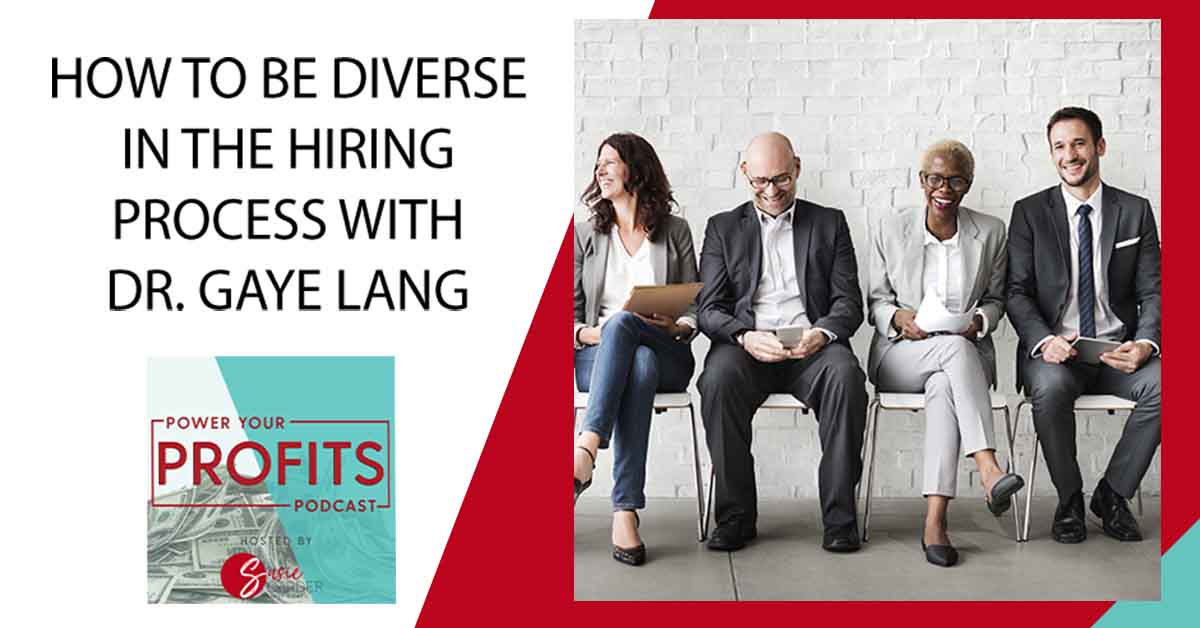
You need to be diverse because the more diverse you get, the more creative you become. Susie Carder’s guest in this episode is Dr. Gaye Lang, the founder of Workplace Restorative Practices, Inc. Dr. Gaye talks with Susie about how you can diversify yourself by the way you start thinking about who you’re hiring. The best thing you can do is go to where your potential hires are hanging out. Chambers of Commerce and university colleges have diverse communities you can tap. This episode will fill you in if you want more advice on integrating diversity into your hiring practice. Enjoy!
—
Watch the episode here
Listen to the podcast here
How To Be Diverse In The Hiring Process With Dr. Gaye Lang
I have Dr. Gaye Lang. She’s the President and Founder of Workplace Restorative Practices and has many years of experience. She’s a podcast host of Workplace Diversity while working for the White House as a Security Regional Representative. Dr. Lang honed her leadership skills and relationship-building skills. She works to reduce the potentials for lawsuits and other negative associated conflicts in the workplace. Author and co-author of several books and articles and an award-winning book, Colorizing Restorative Justice: Voicing Our Reality. Dr. Lang holds her Doctorate of Education from the University of Houston. Not only is she an amazing badass but she’s one of our global leaders and students. Please welcome, Dr. Gaye Lang.
—
I am so excited to have Dr. Gaye Lang. I gave you your official bio but I want to hear from you, which I always have every guest do. What’s your badass list? Let’s tell people the high level because you have done some amazing things in your career. We are going to talk about your business but let’s talk about all the things you have accomplished. You are a very accomplished woman of color. I’m so proud of you and to have you as my sister in this journey, so share.
I began my teaching career a million years ago but that being said, climbing up the ladder of success has always been one of the things I did well. The apex of my career, if I had to put a feather in my hat and plant my flag at the top of the hill, I worked with President George W Bush on the leadership of Rod Paige, the first African American man to be the Secretary of Education in the US. I worked as a Secretary Regional Representative. I managed five states for the US Department of Education, Texas, Oklahoma, Arkansas, Louisiana and New Mexico.
In that role, I worked with Chief State School Officers, who run the school’s state system, Governors, Lieutenant Governors, Congresswomen and Congressmen. That was the apex of my educational career. If I had another flag to land on, it would be working at the State of Texas. I am the Statewide Director and a Senior Advisor to the Commission of Education before. That has been an interesting charge. I managed everything for the training in Texas and Restorative Justice Training or Restorative Practices for teachers, students and parents. Those are the two big lifts.
I’m also an award-winning author for Colorizing Restorative Justice: Voicing Our Reality, a journey through my educational experience as an educator. I’m also a number one bestseller on Amazon. The book number is called SEVEN. About seven African American women were number one on Amazon. Those are the big chunks and the things that I did. Those were nice.
As an entrepreneur, that’s one of our caveats, understanding what it takes to build a business and all the things that we have to do. You have been doing it forever but for a lot of people, it’s a new buzz. It’s diversity, inclusion, equity, tolerance and training. A lot of people lump it into this one thing but what is it? Let’s talk about it. Why do we as entrepreneurs need it? A lot of entrepreneurs think, “I don’t need it. I’m not big enough yet.”
One of the things that people do is get training to check the box. I went to diversity training. They told me what diversity was. I know what diversity is. We can check the box and keep moving. Unfortunately, if you have a company of any size and any employees, diversity, inclusion, equity, tolerance, and training are huge. It can make or break a company within seconds because lawsuits are a reality.
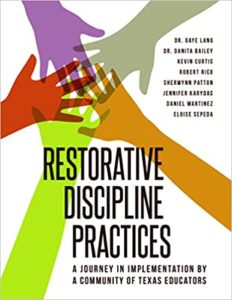
Unfortunately, people sue for every little thing. Some things are not even sueable. They find a way to sue you for that as well. To avoid those things, you get good training that you can implement and make cultural changes at the workplace, not only checking the box. Some of the things that happen when people take the check the box training is they become a little bit lax or days of like, “I took it in. If I say a slur or something that’s offensive, nobody is going to say anything because we all had the training,” but somebody is sitting there feeling that 100%. They may be festering that, and over time, fester a little bit more. That ends up being a conflict at work that wasn’t there before. The training matters.
When you talk about inclusion, it’s okay, Susie, if you invite me into your home but I never get to sit at the table with you. “Am I included?” That becomes a question. You could hire a bunch of diverse people but are they at the table? When I say at the table, that’s the decision-making table. Are they in leadership roles or management roles? Where are they in your space? Are you being inclusive when you talk about what’s going on in the workplace? Do they have a voice at the table at all? Even if they are not there personally, is there someone that’s representative of that group?
You think about equity. The little picture you see with the little kids looking over the fence and all has cartons or boxes underneath their feet. Everybody is on there. The very last one, the little boy can’t see over the fence because he only has one box but that’s equality. Everybody has an equal box. Equity means you give me the number of boxes I need to see over the fence. He needed two boxes. His equity was two. Somebody else didn’t need any and somebody else needed one. Equity looks like that. That is my best example of equity.
When you see that in the workplace, that means not only you are helping me grow as a person and become a leader in the workplace. You are nurturing me along the way, whether I become the top dog and that doesn’t matter. I have opportunities to be trained, have a promotion, and become a leader in the building. When you think about tolerance, it’s a very interesting topic because of the new buzzword. We used to call it tolerance but it’s anti-racism. People have a hard time swallowing that word, so I keep it as tolerance.
Tolerance could look different for different things and reasons. Different people in the organization may need different means or ways to tolerate their ability to do something or be somewhere. If I’m a Muslim, I have to go to the mosque on Fridays but instead of going to the mosque, I need to pray between 11:00 and 12:00. Why would you schedule all of the meetings on Friday between 11:00 and 12:00?
Be tolerant of the fact that I may need that space. Maybe not all the time but sometimes. Training is the biggie because if you can get training in all of those areas, it cuts down a whole lot of problems reduces lawsuits. You can increase profitability by training because people know what to do, when to do it, and why to do it. Diversity, inclusiveness, and all those things build your reputation, profit, and bottom line as a business because the more diverse you could get, Susie, the more creativity comes.
I want to talk about the elephant in the room. Most people won’t ask this or say this because they are nervous. What I find is Caucasian people or people that are not of any other ethnicity but vanilla white is like, “I don’t want to say anything because I don’t want to offend Dr. Gaye. It has almost been flipped that if I say something, then I am racist or there’s the intent behind it.”
Equity in the workplace means giving everyone the opportunity for training, promotion, and leadership.
There are a lot of people who are leaders that don’t want to deal with it. They are putting their head in the sand. When you have a company and start hiring people, that’s when because you are dealing with customers and customers are sensitive. We all have sensitive ears. How would I start as an entrepreneur? How do I handle it if I’m not of that ethnic background?
In the workplace, we’ve got clients that are diverse backgrounds. I learned this the hard way because we had a marketing company. In the marketing company, all our marketing had White people on it. Thank God my industry was loving their suits. “Susie, we are all not White. We need to seek some women of color. I need you. Come on, wake up.” I was like, “I am so sorry.” I didn’t see it because my eyes were looking, “It’s beautiful. That’s great.”
My clients raised their hands and said, “Hello? Wake up,” which I thought was amazing. I didn’t take offense to it. I took it as, “You are right. I apologize. Let me fix it.” They helped me bring more inclusion into my company but by being that voice, they became our focus group to go, “Does this work? Does this not work? Should we do it?”
We ended up creating two brands from a marketing standpoint. If we were going to use people, it was either diverse because some salons and spas were only ethnic. They didn’t want White people on their flyers. They were like, “Susie, this doesn’t make sense.” I was trying to include everybody. They were like, “This makes no sense.” Not everybody is gracious as my clients who were with me. I was humble enough to go, “Sorry. I will change that.” I handle it.
You handled it quite well because you were honest, open, and willing to listen. Those are key points. If you ask the question, be willing to listen to the information and don’t only say, “I heard you but I’m going to do something different.” You heard them and changed what you were doing. That matters. I’m not talking in the wind. I’m speaking to you from my heart and you heard it. That was important.
When you think about the clientele you serve, you want to be inclusive in your thinking. When you are doing marketing, you are marketing whoever the clients are. You should have clients across the board because people have money. Every group has money. Everybody wants to spend some. If you want some of it, you are going to have to cater it to me.
You have to show me how you think I look in your business. How are you going to serve me as a client? It starts with that. When you put marketing out there as you did in branding, you need to be inclusive in that. When you get them hired, and ready to work, make sure you are inclusive when you think about what they are doing. If you have an idea that’s coming and a group of people that’s coming out with a think tank, include some of them in the think tank.
It doesn’t mean that their ideas aren’t going to be the only ideas. It’s a part of the thinking and brainstorming process that you allow them in. You might find that they can give you an angle that you did not have before. Sometimes you overlook that because you think, “They haven’t had that experience.” Maybe they have had it, and you don’t know it or if they haven’t had it, they can bring your eyes to another place and say, “Look at this. You forgot this.” That’s important. That whole inclusion brings them to the table.

When you hire too, look for them in the right places. If you go to Indeed, they are there but they are going to be buried at the bottom of those resumes. Any one of those big old mills that you can go through is going to be buried. They will never get to the top. There will be among thousands. The places you go or where they live, work, and play, such as the Hispanic Chambers of Commerce, US Black Chambers of Commerce, Latino Unite, all these places, ethnic groups, racially, diverse groups have chambers of commerce. They also have “business connections.” They have their networking system, and there’s a way to break in through the chambers.
The other thing you want to look at is universities and colleges that produce minority leaders. African American, historically Black colleges, colleges in certain locales like San Antonio, Texas, where I live. You have a lot of minorities that are living in Hispanics that live in San Antonio, El Paso and Corpus Christi. If I want to market and find my ideal client that was Hispanic or of Latino descent, those are the places I will go. Every city has its own culture like that. You have to go where they are if you want to recruit them into your space and bring them to where you are versus going to Indeed because there will be there and be at the bottom of the barrel.
When should we hire someone like you, Dr. Gaye? When should we go, “When do we bring someone in?” I always look at, “Let me find an expert that can speak the language.” Ignorance is bliss, especially the more employees that you have. I have been sued many times for me not knowing. The employment board, IRS, nobody cares you didn’t know. That’s what I have learned. They don’t care if you don’t know. You are going to be sued. I was like, “My intention was pure.” It doesn’t matter. When should a company hire someone like you?
Anybody like this would be great but hopefully, it’s me. One of the things I try to tell companies is this. The minute you get enough employees that are not family, not close friends, and you haven’t known forever, you need someone like me. You need somebody to start helping you look through what you are doing and how you are doing it. Let’s say it’s you and your husband who started a business. Everything is going well. Your little niece came to work for you, so that’s okay.
You have hired a friend of yours. Friends sue friends, by the way. The same people you buddy-buddy with might sue you. Whoever you get that is not in your friendship or family circle, particularly family, I would start thinking about hiring someone to at least do some basic training because you have to deal with John Q Public differently.
It’s not only you and your husband dealing with it when you all could talk, do and fix it out. Nobody is going to fix it when your employees do it. They are not going to fix it very well if you do it either, but you have more of an opportunity to fix your mess than if somebody else makes it because once they make it, they are going to sue the company and everybody else in it if they can. You want to make sure that you get it in early enough that you get the training in. As a mom-and-pop operation, if you want it to at least do what I call a cursory, look to see if you are doing the right thing as a small business owner. How can you get more diverse clients? Are you treating the clients well?
I can tell you a quick experience. I was in a boutique that a lady owns. She’s a Caucasian. I would go there to browse. I went breeze to live out. I’ve finally got tired of sitting in the house with COVID so I went to her shop, not to a bar. When I came in, I didn’t dress up because I would leave in the house. I had on my little jog suit. I didn’t look terrible but I wanted the dress up like this. She said, “Come in.” I said, “Thank you so much.” She said, “Are you looking for anything?” “No, the same little thing.” I’ve got to the counter, saw this necklace and said, “I like that.” She said, “This is expensive.”
If you ask a question, be willing to listen to the information and don’t just say, “I heard you, but I’m going to do something different.”
I said, “Is it?” She said, “This is a real diamond and a real Jade in here.” I said, “Very good. How much is it? I would buy it but I don’t think I’m going to buy it now. I’m going to tell you why. You assumed I couldn’t afford it. My name is Dr. Gaye Lang. I don’t play games. When I want to buy something, I can afford it. If I can’t afford it, I won’t look at it. I wouldn’t have mentioned it to you. Don’t assume because I’m a woman of color and not dressed up with lipsticks, pearls, and whatever else. You made a bad assumption.” She said, “I didn’t mean it like that.” “I’m sure you did but that’s the way I took it.” I want to let you know.
Dr. Gaye has an error about her. She has a mama look like, “Don’t mess with me.” I wouldn’t have ever said anything like that.
It looked like people should know that. I’m sure she didn’t mean anything by it either but I guess African Americans don’t come in her shop that much. Maybe she feels she’s a high-end shop but the fact of the matter is I was browsing because I left the house. I was tired of sitting in. I might have bought it. I liked it but I didn’t have to buy it. After she said that, I said, “I don’t have to buy it.”
Coming from a Caucasian community into a diverse community, it’s happened to me in reverse but also the way I grew up. My dad was very racist. I grew up with a lot of racial slurs that were language. It wasn’t until I worked in this store that I was the only White person. Everybody else was people of all colors. Realizing stuff that flew out of my mouth but it’s what I was raised with. I didn’t even know it was a racial slur or had a racial connotation to it. It was hard for me as a young woman to go, “This is how we grew up. These were the things that we said.”
That’s where I look, especially in our environment. As business owners, one of the things we have to be responsible for is to know. Educate yourself. Find Dr. Gaye. Look at what policy and procedures we need to put in place to protect ourselves, our team members, and our team members from clients. I have had clients who have said racial slurs to Lisa.
Most people know I have worked with Lisa Nichols for years. I would be flabbergasted how she would be treated by service people. I want to fight for her. She’s like, “It’s not worth it.” I’m like, “It is worth it. It’s unacceptable.” If we don’t say anything, then the behavior can continue. I love that you said that because her behavior can’t continue.
She will question that like, “Am I being rude?” Part of it is rudeness versus whatever. I learned that in retail years ago. You never know who has money in their paper bag. They might have a paper bag that they are pulling out a lot of money. You don’t know that until you know them. You gave us some great stuff by going out, networking, going to the chambers, looking in the right place, and thinking about, “How do I be more inclusive.” What would you say are some simple, doable things? Once you are at that million-dollar mark, you have anywhere between 6 and 30 employees, so you’ve got to start managing that.
There has to be a training budget, whether you do it on Zoom, hire someone on Zoom, have someone come into your business or someone like Dr. Gaye consulting. You would go, “Look at my policy and procedures. Am I doing this right? Does this look good?” You can look at something for ten minutes and go, “You are a walking violation, Susie.” That’s what we need. You have been doing this for years. This is in your sleeve stuff and what you need to do.

The older you get and the more you have done something, it seems easier to me because all those years were learning curves. The last years have been perfect. The first twenty was fumbled dumble, all trouble. I was like, “What do I do next?” I spend many years of excellence working toward excellence in diversity, inclusion, equity, tolerance, and training people to think differently about others and being tolerant of the fact that this person may be different from you but doesn’t make them bad. It makes them a different person but our differences are what make us strong. That is the big key. People cannot see that because they are too busy finding out what’s different. What’s different is the strain.
My clients are saying, “How much money did I lose in the past because I didn’t know?” Someone is not going to say something to go, “They don’t get me.” We all hear it but what does that mean? Looking at a company and corporation, what are the simple, doable things we can implement before bringing somebody like you on?
You can look at your hiring practices. How do you hire someone to come to work for your company? If you have an open position, let’s say it’s a secretarial, administrative, coaching or sales position. When you hire that person, are you the only one interviewing? Do you have an interview team? Does the team look like and represent what you want your company to represent?
If you are the only person on the team and want a diverse company, have some diversity. If you don’t have current diversity on the team, be honest enough in the interviewing process and say, “I want to be better in doing my business and being more diverse in my thinking about how I work in this business.”
You could diversify yourself by the way you start thinking about who you are hiring. Businesses have to grow. They are not going to sit stagnantly. If they do, you are not going to be in business very long. How is it I want my business to look? What do I want my business to say to the world? When I interview, I’m looking for people who are quality. No matter what their color is or what color you are, I want quality.
Number two, if I want diversity, I want to bring a person that’s diverse that is accepting of others as well. You can’t bring a person in that field like, “I’m African American. I’m a Latino. You all need to cater to me.” It’s not about that. This is about a give and take. You get to know me. I get to know you. You tell me your likes and dislikes. I tell you mine. We try to make sure we work together and build a relationship so that we don’t have conflict. You keep dragging the conflict again if you don’t bring it about in the interview process what that looked like.
One of my favorite interview questions to ask is, “What is your position? How do you feel about diversity in the workplace? What is it you think about that? Is it good or bad? What do you like or don’t like? Have you had that experience? Whatever you want to say about it, it’s all good. I only want to hear what you have to say.” In that little question, you can tell a lot about a person because they will either have experience with it, understand what you are talking about or start making stuff up, and you can tell when they are making it up. I know because you know. If you are the interviewee and you know or studied it yourself but you know what you are looking for, what you don’t want for sure, the minute they start making up something, it’s like, “Red flag. Next.”
You have more of an opportunity to fix your mess than if somebody else makes it.
What was the biggest failure you see a company experience because of them not implementing workplace diversity? We worked on this a little bit, looking at what does a lawsuit costs? What’s the biggest thing you saw that was so obvious to you because this is your expertise but to them, which either cost them millions, team or something? What would that be?
In United in Research, because I have read some astonishing things, one of them was such a simple thing but it cost lots of money. Here’s what happened. There was a position that was open, and two people applied for it. Both of them will qualify for the position. One was African-American and one was a European-American. The European American told the African American person, “I’m applying for that job, too.” Everybody says, “I’m applying for a job, too.” That’s not a big deal.
After the interviews were over, the European-American went to the African-American person and said, “Do you know if you are going to get the job?” He said, “I don’t know if I’m going to get it or not but at least I tried.” He said, “I probably will get the job because they are looking for somebody that has these skills.” In other words, he told African-American he doesn’t have the skills. In essence, “I’ve got the skills. You are not going to get it because I don’t think you have the skills,” whether you know this person’s skills or not, you are not telling them that.
How do you get off telling somebody who applied for the same job you applied for that they don’t have the skills? That went back to personnel and the personnel director said, “We never said that about you. We feel so bad that that happened. We are not sure.” Guess who got the job? It’s the European-American. He did get the job. The African-American sued because they set him up for failure. They made him think he even had an equal opportunity to get the job.
That other guy could have got it because he was the best candidate but he opened his mouth and said the wrong thing. It put the company in jeopardy. The person sued, whether they wanted it or not, it wasn’t the point. The stress of having to go through a lawsuit, your credibility is out there. He tells everybody that story, I’m sure. He could have been better, Susie.
We don’t know that but you don’t go around after you do an interview and tell the other candidate, “You are not going to make it.” You end up with the job. It’s like, “What happened there?” One lawsuit is $250,000 to a business of lawyer fees and paying back employee. The income is lost. You have a lot going with one lawsuit.
People don’t look at that. I always look at that only because I have been sued as a business owner before. I’m sensitive to, “What am I doing? How am I doing? How am I tracking?” In the olden days, in my first businesses, I didn’t think I was a big enough business. I’m like, “We are only doing $1 million. What is that?” That’s still a small business.
That’s a lot of money. If somebody sues you against that million, it’s not a million anymore. They are knocking that million down quickly.

It was a lot of money for us. To them, it was like, “They are rich.” It’s important to go about what those things are, especially in the marketplace. In our industry, the world is giving us a wake-up call. We have to heat to that and go, “What are the experts I need in my corner?” If you don’t have someone, get a board of advisors or mentors. Go to the African-American Chamber of Commerce or the Hispanic Chamber of Commerce to find people willing to do some training. Talk to Dr. Gaye and go, “What are the things I need in place?” What do you see as the most difficult part of implementing diversity inclusion?
You have to be willing to do it, Susie. The thing about it is people say they want to do and are interested in doing that but the minute you ask them to do the one thing, the one thing they say they wanted to do, they don’t want to. What they want to do is you to come in, train them, let them know what it is, check the box and move on. There won’t be an implementation, follow-up or monitoring. I like to train, mentor, coach, and monitor you to success because when you pay for something, you should get everything that you can get out of the situation.
One training is not going to change a lifetime of training. It’s only going to give me a wake-up call. When we sold our company, the mucky-mucks and big lawyers came in. We had sexual harassment training. I used to be a walking violation, Dr. Gaye. They were talking about inappropriate touching and language. I have worked with these people for ten years. We grew up in the business together. Julie Shepherd Lee, who was my Director of Education, walks in. She grabbed my boobs, and I grabbed her butt right after this training. The lawyer looks at me and says, “Really, Susie?” They are nodding their head at me. You can’t do one training and change.
Life has changed dramatically from that, and the industry you are in has changed.
Ten years of a way culture is not going to change you with one training. That was a perfect example. He said, “We are doing some more training,” which was, “Okay, Sorry.” We are huggy and touchy.
That’s because you knew her well. If you didn’t know her well, you couldn’t do that but people on the outside looking in can’t believe that that’s happened. “Look at that.” You could do it but you have to do that privately. Not in a public way because if the public sees that, an assumption is made about you and your company.
That was in my youth. I didn’t know any better.
You’ve got to do better because you know you know.
I’m a tough nut. I’ve got to sit at your feet for a long time to go, “Let me shift this,” especially if it’s not in your DNA or culture. I have worked with Lisa for many years. It’s in my DNA and culture to be respectful, inclusive, watch what I say, be responsible for my tribe and community. By looking at other people, that’s not their culture. When I’m looking at candidates, I’m looking at, “What do we need next? What skillset? Am I diverse or not diverse? Is our marketing diverse or not diverse?” That takes consciousness and clients like you to help implement that.
One of the things I want to suggest to you and anyone is if you want to know your thermometer about yourself, how you are doing, go to the Harvard Implicit Bias Test. There’s a bias test on everything under the sun that Harvard has created over there with another partnership. When you take the test, let me assure you, do not put this on a work computer. Go to your house and take this test because they want to send you the results. You may be surprised to find out what kind of person you are culturally, where you are swinging it with, and what you lean into right, left or in the middle. You always want to hang around the center.
Whether you know it or not, television does impact your thinking.
I took that test three times. The first time I took it, I was biased against African-Americans. “I’m sure it’s got to be wrong. I will do this again.” I did it again. I’m biased against African-Americans. I had to put myself in check and say, “Why would that be?” I can’t be. This is not correct. When I took it the second time, I analyzed myself. What is it about me that puts that out there that way? I had to look at myself hard.
Here’s what I found out. One, I was passing judgment on African-Americans based on Dr. Gaye Lang’s standard. I’ve got the standard book, and nobody else has the book but me. I’m basing all my stuff on my standards. That was the first thing. Second, I am in the ‘70s, so I was born when you could not speak back to your parents or do anything as these children do nowadays. They would get away with murder. They do. My parents would not have allowed that. My standard of discipline and respect for adults was way different. The final piece, whether we know it or not, television does impact our thinking. Garbage in, garbage out.
Those three factors led me to the place where I was, not overly but slightly biased against my people. A year later, I took it again because my ego couldn’t stand it. It was like, “This is not happening.” When I took it again, I was in the place I felt I should have been the first time. That shows you, even as a person of color, African-American who was brought up harsh in a way that these kids would think was terrible. I didn’t have a problem with it because it was self-disciplined. We taught ourselves to be disciplined, respectful and mindful of it.
I could not judge other people based on my upbringing, standards and perspective. I don’t have a right to do it. Nobody stopped and said, “Gaye Lang, you are in charge of all the Black people.” Nobody gave you that authority. Since they didn’t give it to me, I’m going to have to let that go and understand that people have a right to do what they need to do and not judge them for what they are doing because I don’t know them.
I have walked 1 mile in their shoes. Who am I to pass judgment? Nobody. That’s the test. When you take it, don’t get embarrassed and be shocked. Don’t say, “Oh my god.” None of that. You might find that you are a racist. Who knows? You might find out that something else has happened to you. The one good thing, once you know something is happening, you can do something about it. It took me a year to do something about my perspective.
Have you had any insight to go, “Why would I think that way? Where would that be coming from? This is me. This is my people?”
It took me one minute to feel that, too. I laughed because my younger great-nieces and nephews hated to visit me in the summertime. I was always preaching, “You have to get a good education because you are not rich. You’ve got to go to school. If you don’t go to school, you will go to vocational school. You find a trade. You’ve got to make it. I made it. You all have it so much easier. We couldn’t even do some of these things in school. We couldn’t even go to that car or step on that campus. What are you talking about? You have to make it. Your life is much better and easier than mine.” I still didn’t walk 1 mile in that person’s shoes. I don’t care if they are related to you or not. Nobody died and left me in charge of Black people.

If you could be remembered for one thing, Dr. Gaye, what would it be?
Authenticity. What you see is what you get. I don’t put on a lot of airs. I don’t pretend I’m smarter, better or wiser than anybody but I will work with anybody to make their lives better if I can on my own. The richness of life comes from being your truest self. I can’t be like Susie and be Susie’s personality. I’m going to be my best self like me, not a replica, duplicate or carbon copy of somebody else. Authenticity is big for me. I’m a genuine person. I’m not wishy-washy or anything.
You are consistent. You are who you are. I have known you for several years and I will attest to that. I want you to reach out to Dr. Gaye. Where can we find you? Let’s give them your contact information. Share where we can find you on social or your website.
It’s WorkplaceRestorativePracticesInc.com. I have Facebook and a podcast as well, which is Workplace Diversity. Please tune in to that. This season, we are talking about my favorite topic, which is equity. Susie, you have been on it before yourself. You had the one on inclusion in that. That was a good podcast.
I invite you. Before you need Dr. Gaye, don’t do what I did and get sued before I sought out the people I needed to put the practices in place. Research and look at how we tame the beast so that you are managing your business with integrity, diversity, inclusion, equity and tolerance. It takes one minute to reach out to Dr. Gaye to make that happen. Check out her books on Amazon.com. If you search her name, Gaye, you can find all her books. We’ve got four of them listed there that you can take advantage of.
You are in business for yourself, not by yourself. We are here, your partners in the journey. Dr. Lang is joining us for another fabulous episode. Please like, share, and follow for more juicy content. If you know someone that needs this conversation, please forward this show to other people so that we can, together, make the world a better place. Dr. Gaye, thank you. I appreciate you.
Thank you, Susie, for having me on. Until then. Keep reading.
—
I had a brain slip up, so here’s the information I needed to share with you. You can find me at WorkplaceRestorativePracticesInc.com, where you can receive a free download of Three Ways to Avoid a Potential Lawsuit. You can also find me on Facebook, Workplace Diversity with Dr. Gaye Lang, also on my podcast, Workplace Diversity, your workplace DIETT, Diversity, Inclusion, Equity, Tolerance and Training, and on LinkedIn, Workplace Restorative Practices, Inc. with Dr. Gaye Lang. Thank you so much, Susie.
Important Links
- Workplace Restorative Practices
- Workplace Diversity – Apple Podcasts
- Colorizing Restorative Justice: Voicing Our Reality
- SEVEN
- Lisa Nichols
- Harvard Implicit Bias Test
- Workplace Diversity with Dr. Gaye Lang – Facebook
- Workplace Restorative Practices, Inc. with Dr. Gaye Lang – LinkedIn
- Facebook – Gaye Lang
- Amazon.com
- Gaye Lang – Amazon
- Three Ways to Avoid a Potential Lawsuit
- https://www.amazon.com/dp/B099NZT2N2
About Dr. Gaye Lang
 Dr. Gaye Lang is the President and Founder of Workplace Restorative Practices, Inc., and has over fifty years of experience. She is podcast host of Workplace Diversity. While working for the White House as the Secretary Regional Representative; Dr. Lang honed her leadership and relationship building skills. Dr. Lang’s work reduces the potential for lawsuits and other negatives associated with workplace conflict. The author and co-author of several books and articles. One the Award-winning Colorizing Restorative Justice: Voicing Our Realities. Dr. Lang holds a Doctor of Education from the University of Houston.
Dr. Gaye Lang is the President and Founder of Workplace Restorative Practices, Inc., and has over fifty years of experience. She is podcast host of Workplace Diversity. While working for the White House as the Secretary Regional Representative; Dr. Lang honed her leadership and relationship building skills. Dr. Lang’s work reduces the potential for lawsuits and other negatives associated with workplace conflict. The author and co-author of several books and articles. One the Award-winning Colorizing Restorative Justice: Voicing Our Realities. Dr. Lang holds a Doctor of Education from the University of Houston.
